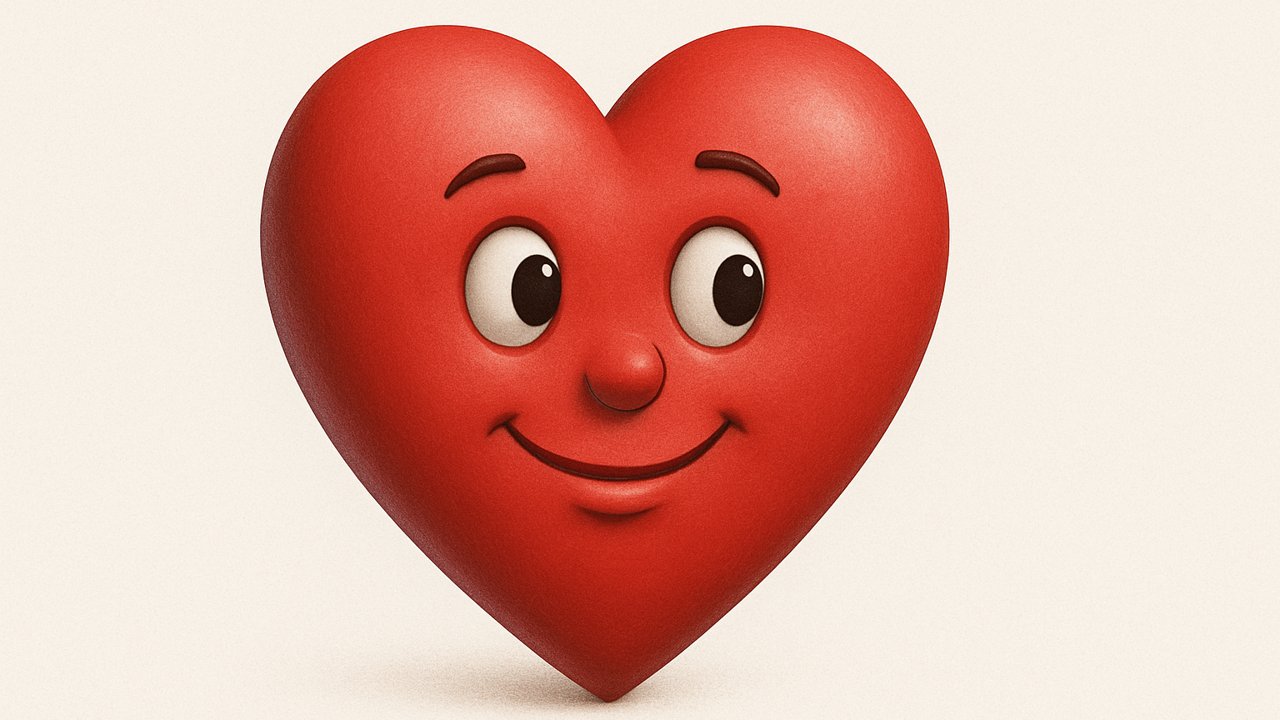The meaning of emojis in modern digital communication
In today’s world, digital communication has become an inseparable part of our lives. Every day we write messages, comment on posts, react to content — and we often do it not with words, but with symbols. Emojis have become a universal language of emotions, understood without translation. They add tone, expression, and emotional nuance to text — things that are hard to convey through words alone.
The special place of the heart emoji among other symbols
Among countless emojis, the heart ❤️ holds a special meaning. It represents love, tenderness, support, and gratitude — emotions that unite people. This small symbol has become not only a sign of affection but also a universal expression of human warmth in the digital world.
The Origin of the Heart Symbol
Historical views of the heart as a symbol of love
In ancient times, the heart was considered the center of life, the soul, and emotions. Across various cultures, it was associated with love, courage, and moral integrity. Over time — especially in the Middle Ages — the heart became a symbol of love, passion, and loyalty.
Depictions of the heart in art and culture before the digital era
The symbolic image of the heart as we know it today — with two rounded lobes at the top — first appeared in medieval Europe. It was used in heraldry, manuscripts, religious art, and jewelry. Later, it became a staple of mass culture, especially through 20th-century design and popular graphics, turning the heart into a global icon of love.
The Birth of the First Emojis
Japan in the 1990s: The creation of the first pixel emojis
The first emojis appeared in Japan at the end of the 20th century as tiny 12×12 pixel images. They were created to make electronic communication more emotional and expressive.
The creation of the first emoji set
The original set contained around 176 pictograms depicting simple concepts — emotions, weather, transportation, and everyday objects. The idea was to create a short, universal visual language understood without translation.
The place of the heart in the first emoji set
Among those first pictograms was a red heart ❤️. It quickly became one of the most popular symbols. When developers later temporarily removed it, users demanded its return — proving that even in the earliest days of digital communication, the heart was irreplaceable.
Development and Popularization
How emojis spread around the world
At first, emojis were used only in Japan’s mobile market. Gradually, they became part of global digital culture as major tech companies integrated them into their interfaces, making them accessible worldwide.
Standardization through Unicode
A major breakthrough came when emojis were officially added to the international Unicode standard. This allowed them to display consistently across devices and platforms. From that point, emojis became a truly global language.
Variations of the heart emoji
Today, there are dozens of heart variations — 💛, 💚, 💙, 💜, 🖤, 🤍, 💔, 💞, 💖, 💘, and more. They can be animated or static, pulsing or glowing, adding emotional nuance to every message.
Symbolism and Meaning of Heart Colors
Red Heart ❤️ — classic love
This is the most widely used heart in the world. It represents sincere love, affection, and care. It’s sent in romantic messages, greetings, and expressions of support.
Other colors:
💛 — friendship, warmth, gratitude
💚 — harmony, nature, healing
💙 — trust, calm, stability
💜 — compassion, empathy, care
🖤 — mourning, irony, “dark aesthetic”
🤍 — purity, honesty, spiritual love
The colors of hearts help convey emotional nuances and enrich communication.
Cultural Influence
Use in communication and culture
The heart emoji has become an inseparable part of digital life. It appears in personal messages, comments, marketing campaigns, and even art. It enhances emotional connection and creates a sense of closeness.
Meme culture and new forms of emotion
In modern internet culture, the heart has become a tool for humor and self-expression. Combinations like “💀❤️” or “💔➡️💪” turn into mini-stories with emotional subtext. The heart emoji has thus evolved into not only a symbol of love but also a creative medium of expression.
Criticism and Evolution
Do emojis replace real feelings?
Some researchers argue that the frequent use of emojis oversimplifies communication. However, most linguists agree that emojis don’t replace emotions — they represent a new form of expressing them: short, but sincere.
New forms of visual communication
After emojis came GIFs, stickers, and reaction icons. Yet emojis remain the foundation of digital emotionality — simple, instant, and universally understood.
Fun Facts
The ❤️ emoji is among the top three most-used symbols in the world.
Over a billion hearts are sent every day in various forms.
It’s most often used in supportive messages, greetings, and emotional comments.
Conclusions
Why the heart emoji became a universal symbol of emotion
The heart emoji ❤️ combines the ancient history of love symbolism with modern digital technology. It’s understood by people of all cultures, languages, and ages.
Its role in the future of digital communication
In the future, as communication becomes even faster and more visual, the heart will remain one of the main symbols of humanity. The tiny pixel heart reminds us that even in a technological world, emotions are what matter most. ❤️
